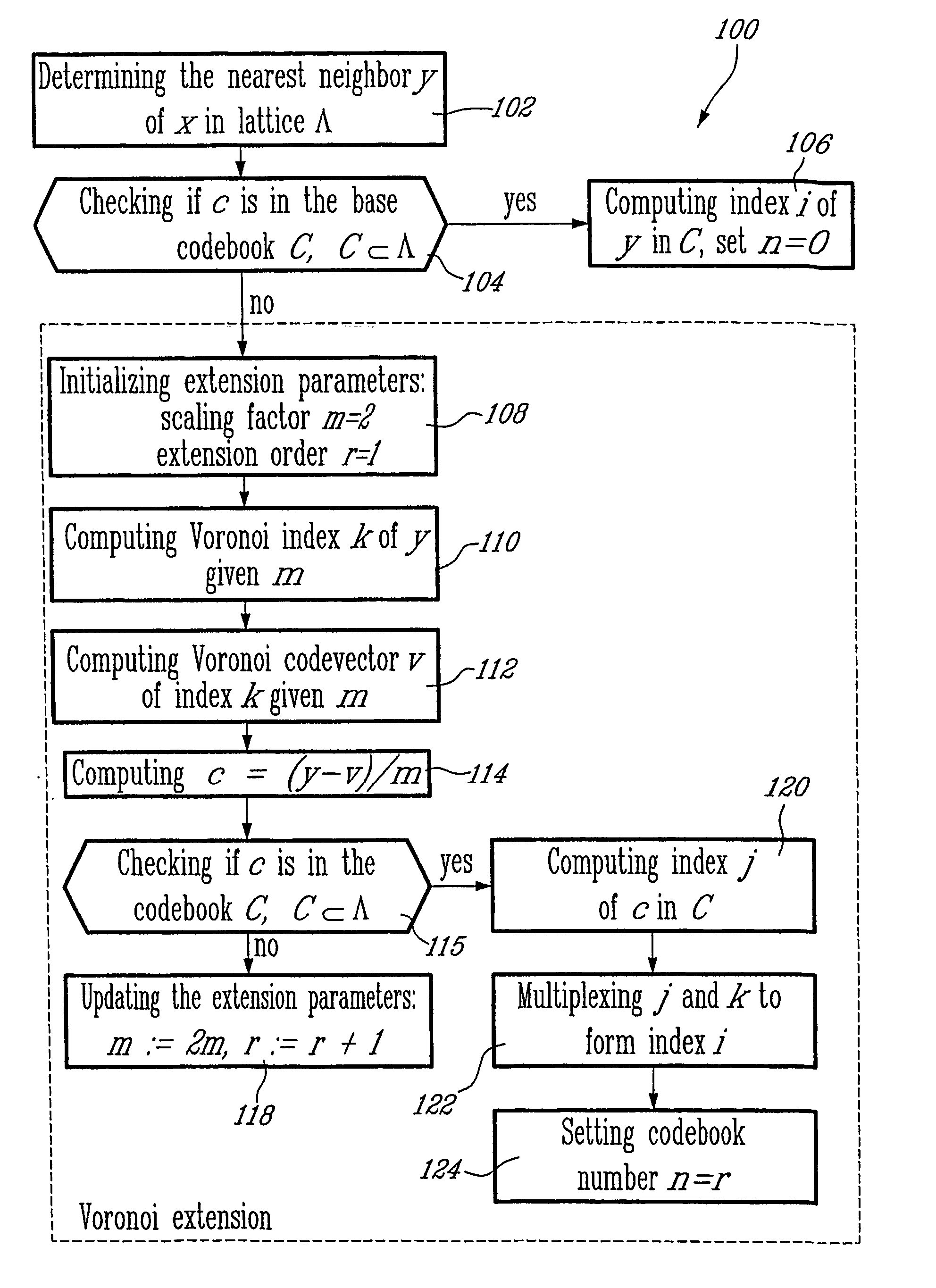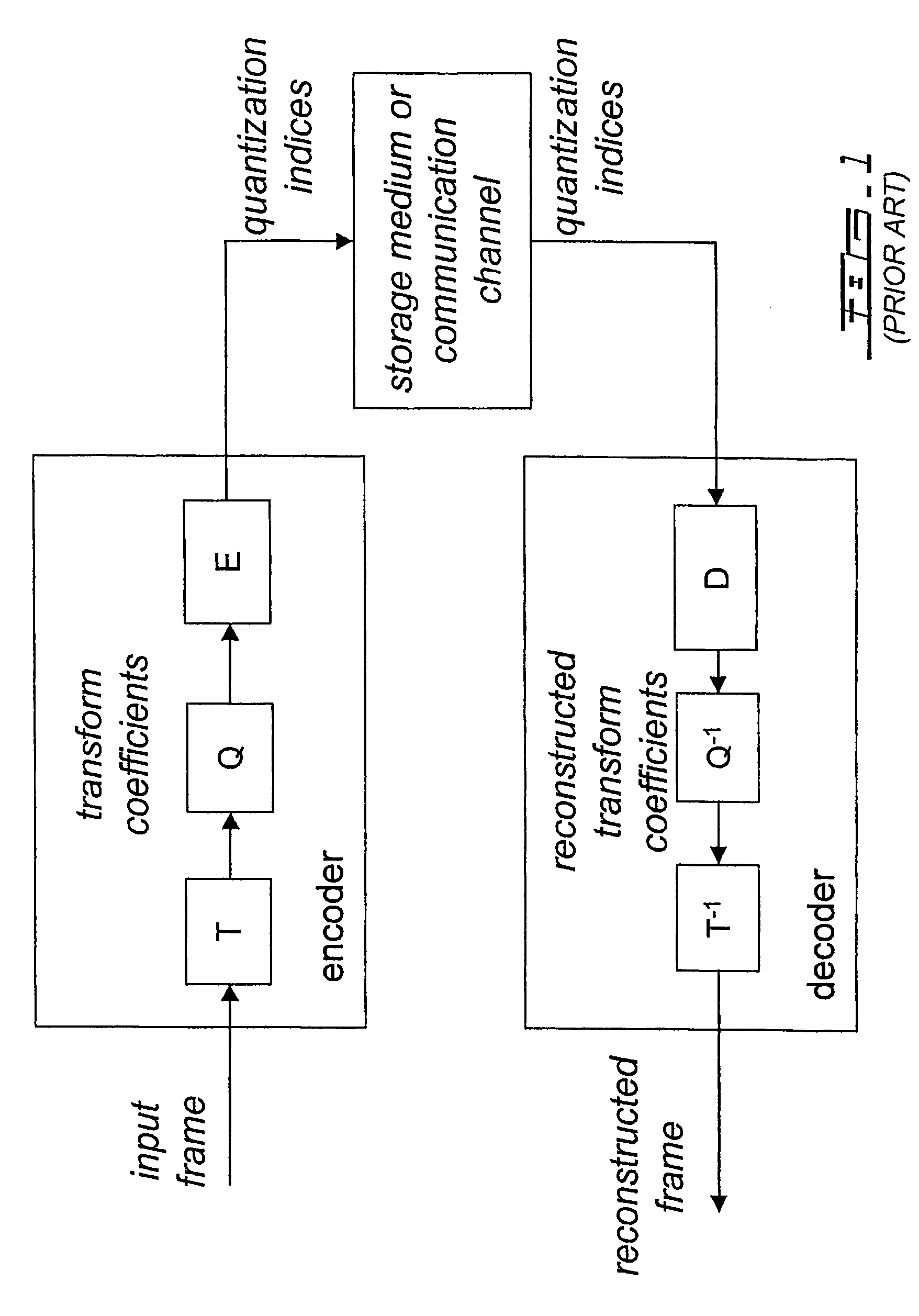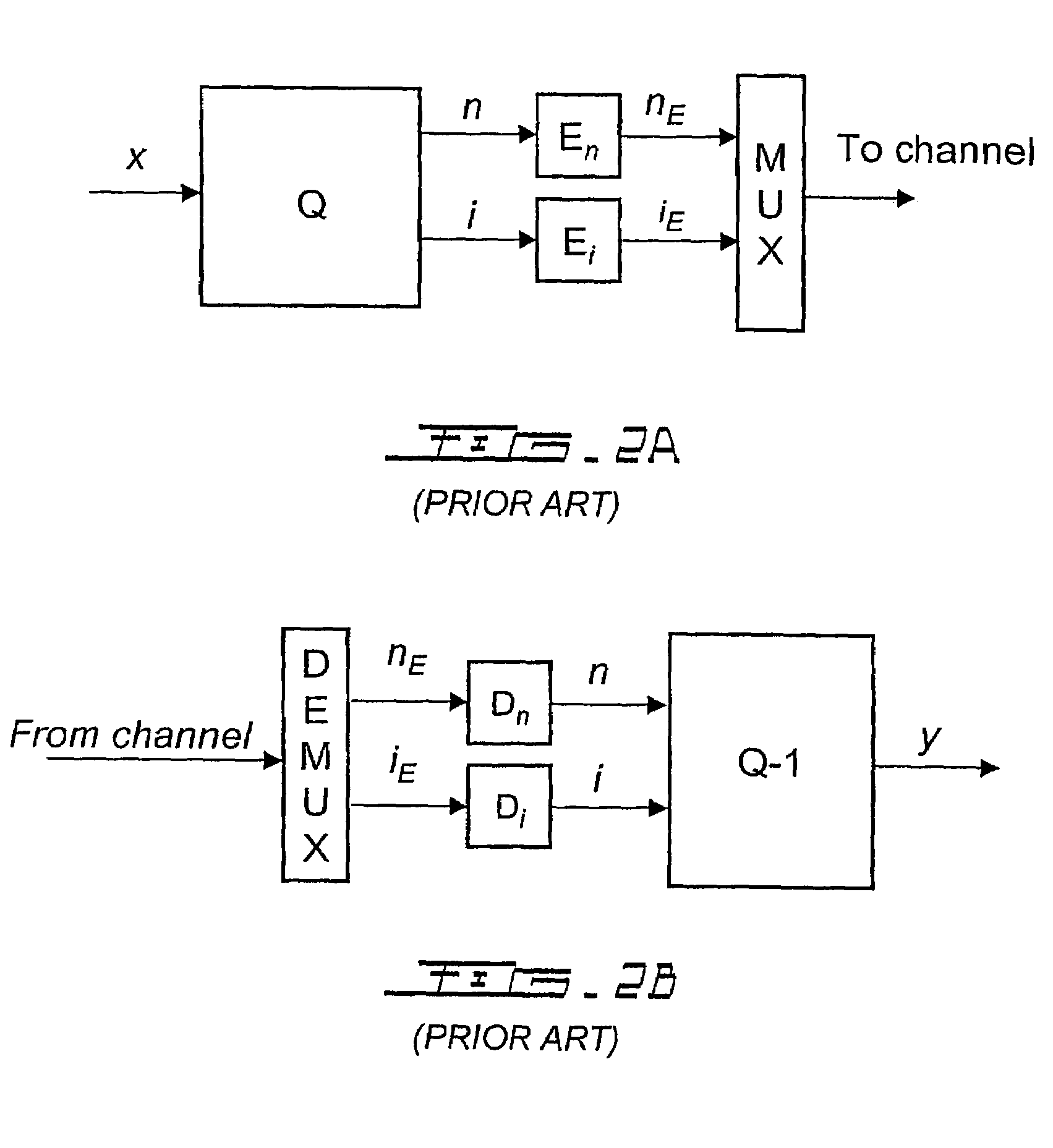Method and system for multi-rate lattice vector quantization of a signal
a signal and lattice vector technology, applied in the field of signal encoding and decoding, can solve the problems of increasing exponentially the bit rate and reducing the average distortion, and increasing the memory requirements and computational complexity of the codebook
- Summary
- Abstract
- Description
- Claims
- Application Information
AI Technical Summary
Benefits of technology
Problems solved by technology
Method used
Image
Examples
third embodiment
[0145]Then, in step 104, it is determined if y is an entry of the base codebook C. If y is in C (step 106), the number of bits used to quantize x is thus NR, which corresponds to the number of bits used by the base codebook. The codebook number n is set to 0 and the encoding method terminates. If y is not in the base codebook C, y is considered an outlier and the method 100 proceeds with step 108, which, with steps 110–118, form a Voronoi extension method according to the first aspect of the present invention.
[0146]As discussed hereinbelow, since y is an outlier, more bits are required to quantize x with y compared with the case where y is part of the base codebook. The extension procedure, which is iterative, generates an extended codebook, eventually including a lattice vector y, which can then be indexed properly.
[0147]Step 108 is an initialization step, where the extension order r is set to 1 and the scaling factor m to 2r=2.
[0148]The Voronoi index k is then computed of the latt...
second embodiment
[0188]In the multi-rate lattice vector encoding and decoding methods, the Voronoi extension was iterated by incrementing the extension order r until y is reached. This may yield an unbounded complexity. In order to constrain the worst-case complexity, it has been found advantageous to use a maximum of two iterations for the Voronoi extension.
[0189]In the initialization step of the extension method, the extension order r and the extension scaling factor m are set to some initial values given the lattice vector y=[y1 . . . y8] so as to minimize the number of iterations over r. The iteration counter iter is set to zero.
[0190]The pre-selection of r and m is implemented as follows. First, the floating-point value σ=(y12+ . . . +y82) / 32 is computed, r=1 is set and m=2r=2. Then while σ>11, iterate σ, r, and m by updating σ:=σ / 4, r:=r+1 and m:=2m. The rationale of this procedure is justified by the following two observations:[0191]When moving from the rth order extension to the (r+1)th exte...
PUM
 Login to View More
Login to View More Abstract
Description
Claims
Application Information
 Login to View More
Login to View More - R&D
- Intellectual Property
- Life Sciences
- Materials
- Tech Scout
- Unparalleled Data Quality
- Higher Quality Content
- 60% Fewer Hallucinations
Browse by: Latest US Patents, China's latest patents, Technical Efficacy Thesaurus, Application Domain, Technology Topic, Popular Technical Reports.
© 2025 PatSnap. All rights reserved.Legal|Privacy policy|Modern Slavery Act Transparency Statement|Sitemap|About US| Contact US: help@patsnap.com



